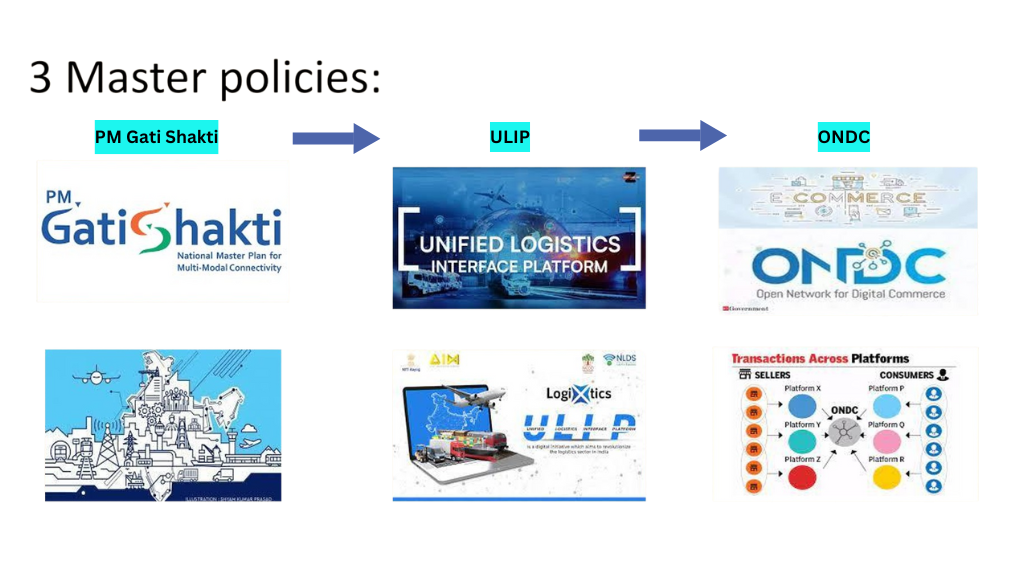The Globalisation is now in its advanced stages where individual countries should first be self-reliant (in short first become Atmanirbhar and then become a world power) The earlier version of Globalisation saw wealthy economies creating rules, laws and pushing goods & services to developing nations having large population with purchasing power due to rising middle class (consider EU & America) The only exception to the earlier version of Globalisation was China & Russia who first created their own economy made it sufficient for themselves and then went on to become superpowers. China’s dominance by its contribution to world’s GDP grew from 2.26% in 1980 to 17.22% in 2022. Whereas Russia contributes to world’s 14% energy supply Many developing countries now understands that it is imperative to first become a self-reliant economy and then cater to world’s needs but however to do it more sustainably unlike the doings of China & Russia (we all are seeing the negatives of being reliant only on the 2 Non-democratic countries of the world) The stage is set for the world’s largest democracy – India to unleash its growth potential and perform better and be more trustworthy than her incumbents – China & Russia.
Integrated Plan by the GoI
An understanding of the various policies launched by the GOl recently to integrate towards a Master plan of Atmanirbhar Bharat.

PM-Gati Shakti
Definition:
To digitally integrate all transport / Infrastructure related departments to provide updated information on Infra developments to all GOl departments.
Effect:
Will develop world class infrastructure for people & transport of goods.
Aim:
To be part of world’s top 25 countries having best world class infrastructure.
Benefits:
- Inter-department Synergy – Time & Cost effective infra developments.
- Integrated & seamless connectivity for movement of people & goods.
- Promote last mile connectivity of Infrastructure.
ULIP – Unified Logistics Interface Plan
Definition:
To enable technologically-enabled, integrated, cost-efficient, resilient and sustainable logistics ecosystem for accelerated and inclusive growth.
Effect:
- Reduction in logistics cost.
- MSMEs & Farmers to benefit from improved logistics efficiency.
- Cost & time effective transport of goods across country and even boost exports.
- Attract more FDIs for building goods and services in India.
Aim:
Reduce logistics costs from current 14% of India’s GDP to only 8% of India’s GDP.
Integrations in Plan:
- Gati Shakti – Will give world class infra. Building ports, Airways, Railways & Roads.
- Fastag & Vahan and Sarathi data – Realtime info. and Tracking & tracing of vehicles and goods.
- FOIS – Only railways API in the country. Provides Realtime info. and Tracking & tracing of goods.
ONDC-Open Network For Digital Commerce
Definition:
To promote Open networks for all aspects of exchange of Goods & services over digital or electronic networks.
Effects:
- Most beneficial or utility driven exchange of goods & services will take place.
- Will not allow any single platform to create monopoly and promote healthy competition.
- Seamless exchange of goods and services.
Aim:
To sign-up 90 crore buyers & 12 lakh sellers, while adding $48 billion to Gross
Merchandise value of India. (In next 5 years)
Integrations in place & Foreseable benefits:
- Gati Shakti – Will give world class infra. Building ports, Airways, Railways & Roads for fast & effective transport.
- ULIP – Realtime info. and Tracking & tracing of vehicles and goods providing visibility to ONDC consumers.
- Both suppliers and buyers will be able to choose the best utility as a means of exchanging goods e.g. (A) If I want to incur less, I will choose delivery option which may be late but cheaper. (B) If I want my goods to be received faster, I will choose a slightly expensive but faster means of transport.

